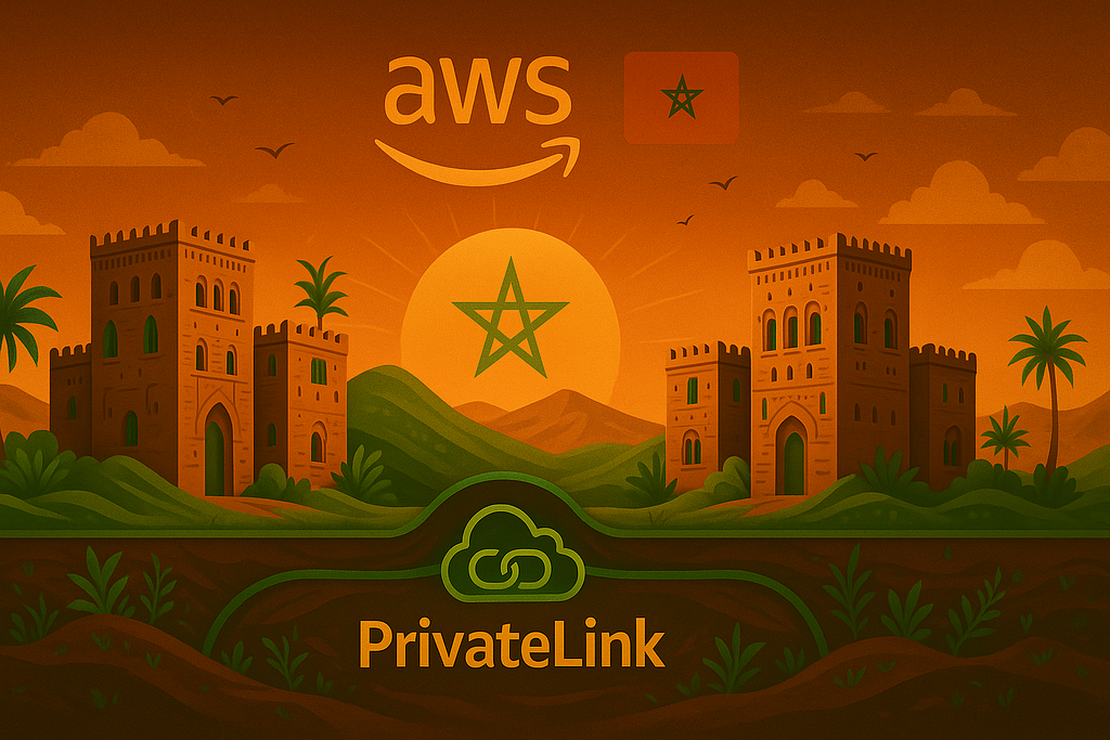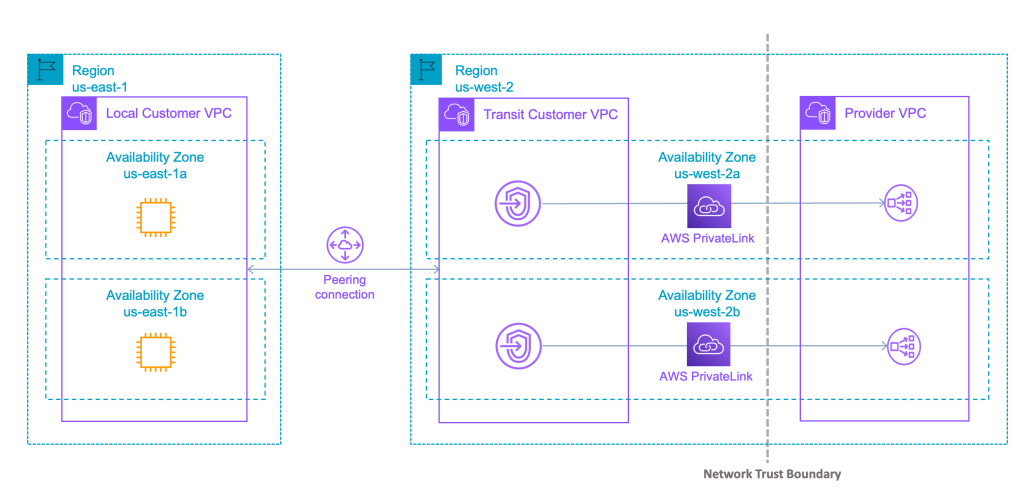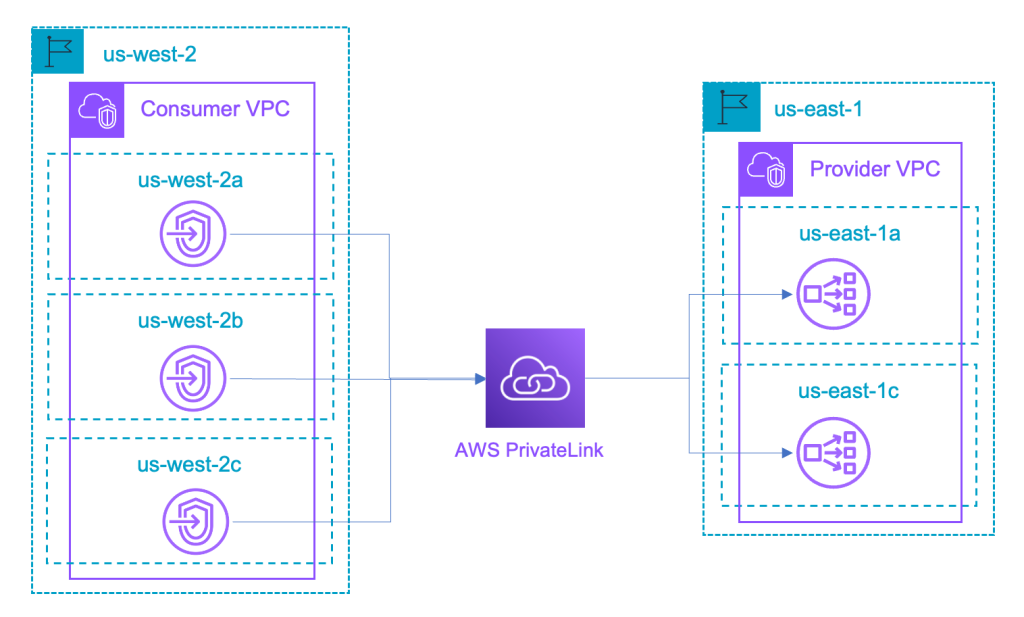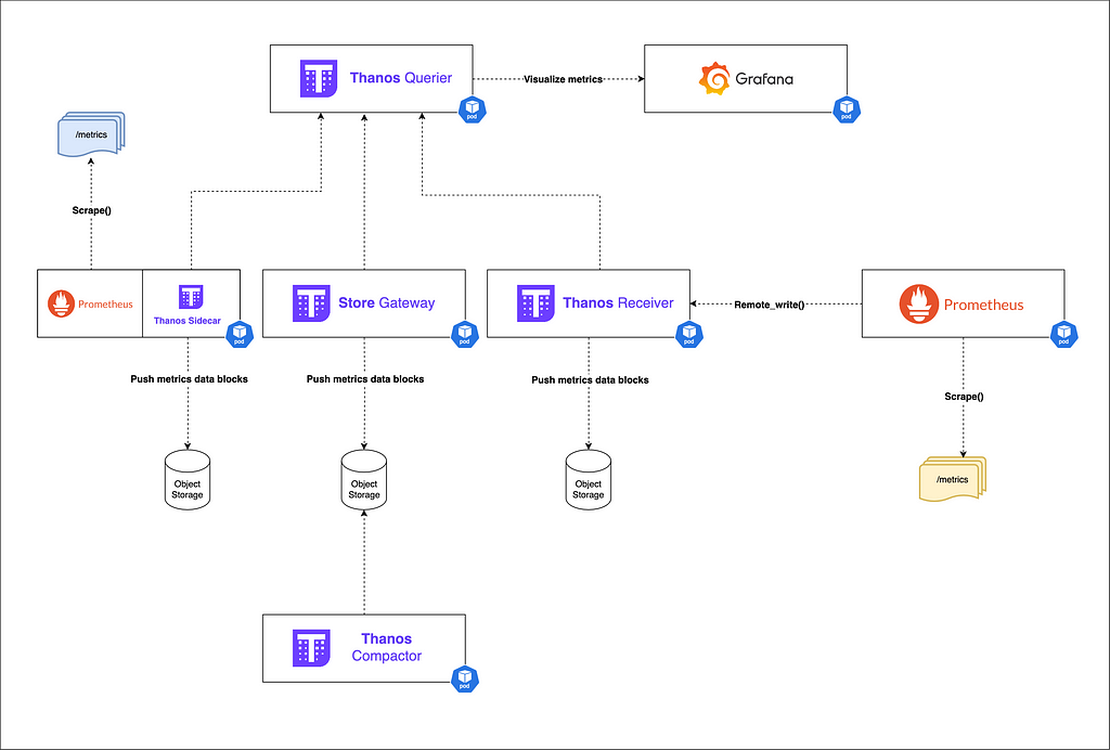
AWS PrivateLink Native Cross‑Region Connectivity
- z4ck404
- Aws , Terraform , Private link
- April 27, 2025

AWS PrivateLink has long been the go-to solution for private connectivity of services within a region. Until recently, sharing services across regions required VPC peering or transit gateways — and sometimes even the creation of “outpost” VPCs to serve as transit VPCs. All that changes with the native Cross-Region PrivateLink solution.
1 — The “Gymnastics” of Terraform‑Based Inter‑Region PrivateLink
Before December 2024, if you wanted a private interface endpoint in Region B for a service hosted in Region A, you have two options:
- Inter‑Region VPC Peering + PrivateLink (refer to the article where we set it up in Terraform)
- Transit Gateways
The widely used approahe was the the coupling of the peering and privatelink by :
1 — Deploying three VPCs
- Service Provider in Region A/ us-east-1
- Service Provider Outpost (Transit VPC) Region B/ us-west-2
- Service Consumer in Region B/ us-west-2
2 — Peer the Outpost VPC back to the Provider VPC (Peering supports cross regions peering connections)
3 — Register a Network Load Balancer (NLB) in the Outpost VPC as a VPC Endpoint Service
4 — Create an Interface VPC Endpoint in the Consumer VPC pointing at that service

While this approach works well, it adds cost , complexity , and latency. You’re maintaining extra VPCs, NAT gateways, peering connections — and aligning AZs across regions.
2 — Native Cross‑Region PrivateLink
On 11 December 2024 , AWS announced Cross‑Region Connectivity for PrivateLink :
_“With native cross‑region PrivateLink, service providers and consumers can share and access endpoint services across different Regions — without stitching together peering or Transit Gateways.”
— _** _George Oakes, Devin Taylor & Wafa Adeel, _**AWS Blog
Introducing Cross-Region Connectivity for AWS PrivateLink | Amazon Web Services
What’s Changed?
- No Transit VPC or peering required
- Single NLB anchored in the service’s home region
- Interface endpoints in any other region — just like in‑region endpoints
- Automatic AZ alignment and health‑aware routing across regions

3. Hands‑On: Enabling Cross‑Region PrivateLink
🔗 For a full, step-by-step walkthrough of creating the VPCs, NLB, target group, listener, and in-region Interface Endpoint in Terraform, see “AWS Inter-Region PrivateLink using Terraform” (Nov 26 2023), and “How Does AWS PrivateLink Work ?” (Nov 20, 2023).
If you’ve ever stood up a same-region PrivateLink service (anf if not you can refer to the previous articles above 😀), this is nearly identical. The only change is the new supported_regions argument on your aws_vpc_endpoint_service—it tells AWS which remote regions may consume your service.
provider "aws" {
alias = "provider"
region = "us-east-1"
}
# … (VPC, subnet, NLB, target group, listener) …
resource "aws_vpc_endpoint_service" "privatelink" {
provider = aws.provider
network_load_balancer_arns = [aws_lb.nlb.arn]
acceptance_required = false
# 🔑 NEW: list any regions that can create endpoints for this service
supported_regions = ["eu-west-1"]
}
data "aws_caller_identity" "current" {}
# Allow your own account to consume the service
resource "aws_vpc_endpoint_service_allowed_principal" "self" {
provider = aws.provider
vpc_endpoint_service_id = aws_vpc_endpoint_service.privatelink.id
principal_arn = data.aws_caller_identity.current.arn
}
output "privatelink_service_name" {
value = aws_vpc_endpoint_service.privatelink.service_name
}
Then, in your consumer region (eu-west-1 in this example), create an Interface Endpoint exactly as you would in-region:
provider "aws" {
alias = "consumer"
region = "eu-west-1"
}
# … (Consumer VPC, subnet, SG) …
resource "aws_vpc_endpoint" "cross_region" {
provider = aws.consumer
vpc_id = aws_vpc.consumer.id
subnet_ids = aws_subnet.consumer.*.id
vpc_endpoint_type = "Interface"
service_name = aws_vpc_endpoint_service.privatelink.service_name
security_group_ids = [aws_security_group.consumer_sg.id]
private_dns_enabled = false
}
output "cross_region_endpoint_dns" {
value = aws_vpc_endpoint.cross_region.dns_entries[0].dns_name
}
That’s it! No Transit VPC, no peering, no AZ-alignment headaches — just exactly the same Terraform you know, with one extra list of regions.
⚙️ As usual, here’s an example of how to configure privatelink between two different regions and expose an EC2 machine through it:
aws-morocco-samples/native-cross-region-privatelink at main · Z4ck404/aws-morocco-samples
AWS PrivateLink Native Cross‑Region Connectivity was originally published in AWS Morocco on Medium, where people are continuing the conversation by highlighting and responding to this story.



